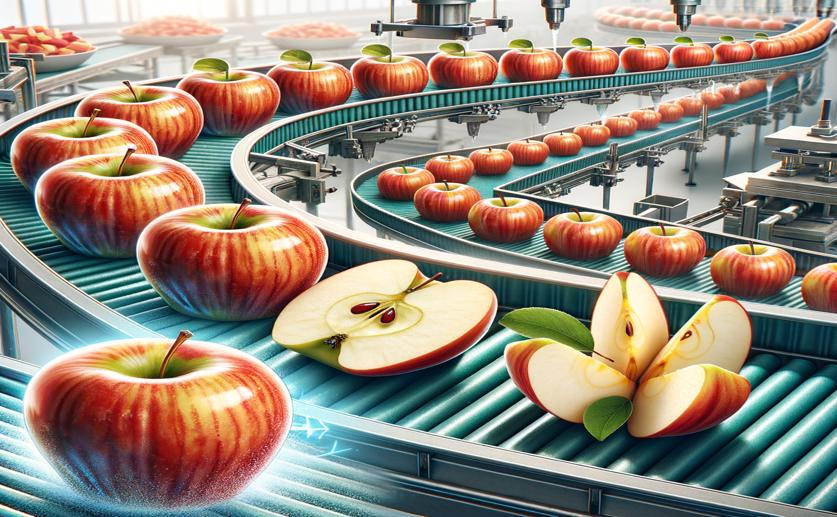
Optimal Browning Inhibitor Mix for Mass Processing Fresh-Cut Fuji Apples
Jim Crocker
27th June, 2024

Image Source: Natural Science News, 2024
Key Findings
- Researchers at Korea University, Sejong, found that a mixture of Vitamin C and trehalose effectively reduces browning in fresh-cut "Fuji" apples
- The study developed a predictive model using electrical conductivity to monitor and maintain the concentration of browning inhibitors
- This method can be applied to other fruits and vegetables, offering a practical solution for the food processing industry to enhance product quality and shelf-life
References
Main Study
1) Prediction model of browning inhibitor concentration and its optimal composition for mass processing of ready-to-eat fresh-cut 'Fuji' apple (Malus domestica Borkh.) strains.
Published 26th June, 2024
https://doi.org/10.1111/1750-3841.17217
Related Studies
2) Browning prevention by ascorbic acid and 4-hexylresorcinol: different mechanisms of action on polyphenol oxidase in the presence and in the absence of substrates.
Journal: Journal of food science, Issue: Vol 72, Issue 9, Nov 2007
3) Efficacy of phytic acid as an inhibitor of enzymatic and non-enzymatic browning in apple juice.
4) Trehalose biosynthesis in response to abiotic stresses.
5) Trehalose metabolism: from osmoprotection to signaling.



 29th January, 2024 | Mary Jones
29th January, 2024 | Mary Jones